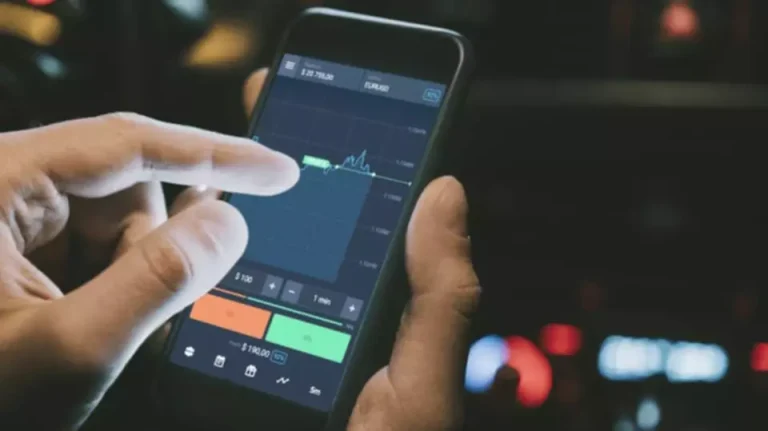The second way to trade the falling wedge is to wait for the price to trade above the trend line (broken resistance), as in the first example. Then, you should place a buy order on the retest of the trend line (broken resistance now becomes support). The falling (or descending) wedge can also be used as either a continuation or reversal pattern, depending on where it is found on a price chart. This lesson shows you how to identify the pattern and how you can use it to look for possible buying opportunities.
As soon as the price breaks above the resistance trend line, an entry point is signaled and the trader will take a long buying position. This information has been prepared by IG, a trading name of IG US LLC. This material does not contain a record of our trading prices, or an offer of, or solicitation for, a transaction in any financial instrument. You should not treat any opinion expressed in this material as a specific inducement to make any investment or follow any strategy, but only as an expression of opinion.
Rectangle Pattern: 5 Steps for Day Trading the Formation
The rising wedge chart pattern is a recognisable price move that’s formed when a market consolidates between two converging support and resistance lines. To form a rising wedge, the support and resistance lines both have to point in an upwards direction and the support line has to be steeper than resistance. For example, when you have an ascending wedge, the signal line is the lower level of the figure.
- In order to identify a trend reversal, you will want to look for trends that are experiencing a slowdown in the primary trend.
- The trend lines drawn above the highs and below the lows on the price chart pattern can converge as the price slide loses momentum and buyers step in to slow the rate of decline.
- By putting the stop loss some significant distance away, this technique would permit a breakthrough resistance in the market, thereby continuing on a long going uptrend.
- Note that the volume on the bearish breakout is relatively low in this continuation move, although it is still higher than the trading volume in the days prior to the breakout.
- Traders can make use of falling wedge technical analysis to spot reversals in the market.
We suggest flipping through as many charts of the more liquid names in the market. Get out your trend line tools and see how many rising and falling wedges you can spot. Draw them, and then make note of the price action on the breakout or breakdown, identifying what made them a bearish wedge or a bullish wedge. During a trend continuation, the wedge pattern plays the role of a correction on the chart.
What is the Falling Wedge Pattern?
The most common falling wedge formation occurs in a clean uptrend. The price action trades higher, however the buyers lose the momentum at one point and what does a falling wedge mean in trading the bears take temporary control over the price action. The second phase is when the consolidation phase starts, which takes the price action lower.

It can be found at the end of a trend but also after a price correction during an ongoing bullish trend. While this article will focus on the falling wedge as a reversal pattern, it can also fit into the continuation category. As a continuation pattern, the falling wedge will still slope down, but the slope will be against the prevailing uptrend.
Falling Wedge
However, even in this case, the analyst should use other technical analysis tools to obtain signals confirming a bearish trend reversal. Both rising and falling wedges can occur over both intraday and months-long timeframes, although intraday wedges can be difficult to identify with much certainty. The strongest wedge patterns develop over a three- to six-month period and are preceded by a strong trend that is at least several months long.

On the other hand, the second option gives you an entry at a better price. A stop-loss order should be placed within the wedge, near the upper line. Any close within the territory of a wedge invalidates the pattern. You can see that in this case the price action pulled back and closed at the wedge’s resistance, before eventually continuing higher on the next day.
Trend Reversal Chart Example
Both scenarios contain different market conditions which must be taken into consideration. This stock formed a falling wedge pattern during its downtrend which led to an upside reversal and a very reliable trading low. Once the upper trend line was broken to the upside, the stock moved higher with ease.
No savings at 45? I’d buy these 2 income shares to turbocharge progress – Yahoo Finance UK
No savings at 45? I’d buy these 2 income shares to turbocharge progress.
Posted: Sun, 01 Oct 2023 12:25:00 GMT [source]
In a falling wedge, both boundary lines slant down from left to right. Volume keeps on diminishing and trading activity slows down due to narrowing prices. There comes the breaking point, and trading activity after the breakout differs.
A Comprehensive Guide to Wedge Patterns
Whether you’re a seasoned trader or just getting started, mastering your day trading psychology can help you achieve your objectives. Many traders often underestimate the power of day trading psychology in achieving positive results. Frankly, this method is a bit more complicated to use, however, it offers good entry levels if you succeed in identifying a sustainable trend and looking for entry levels. This should be placed below the bottom side of the falling wedge. The trading and investing signals are provided for education purposes and if you use them with real money, you do so at your own risk. Note that the example above also shows a decline in the MACD-Histogram’s peaks before the patter ends.
